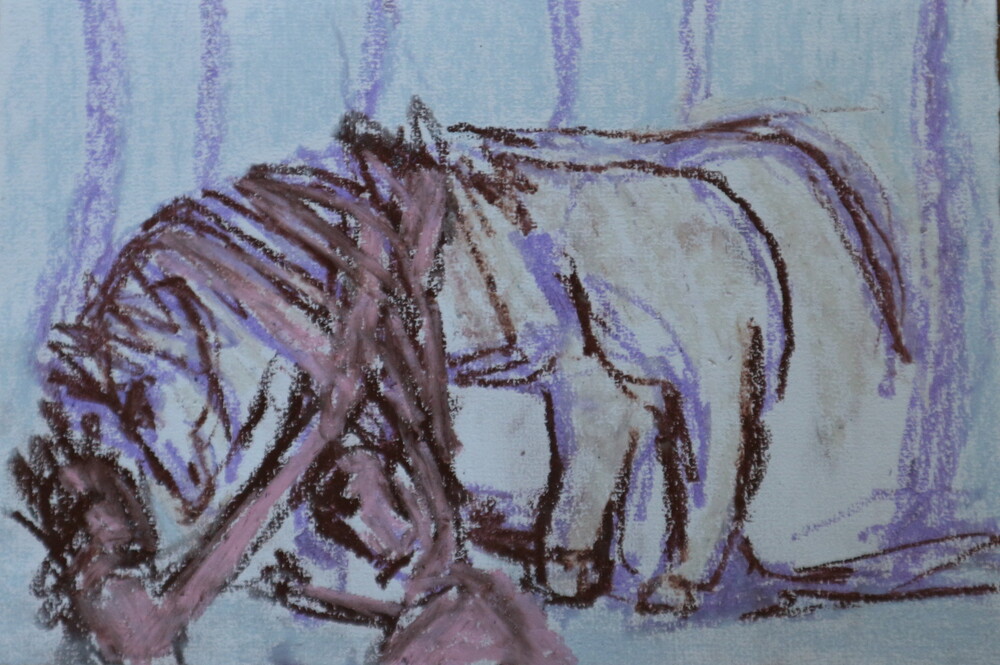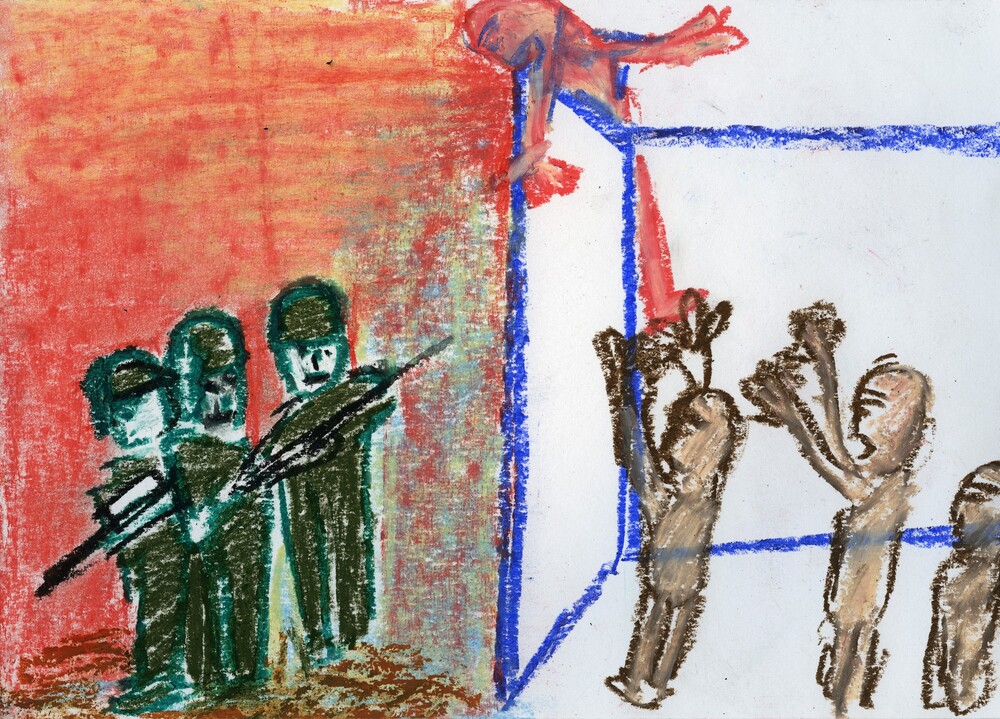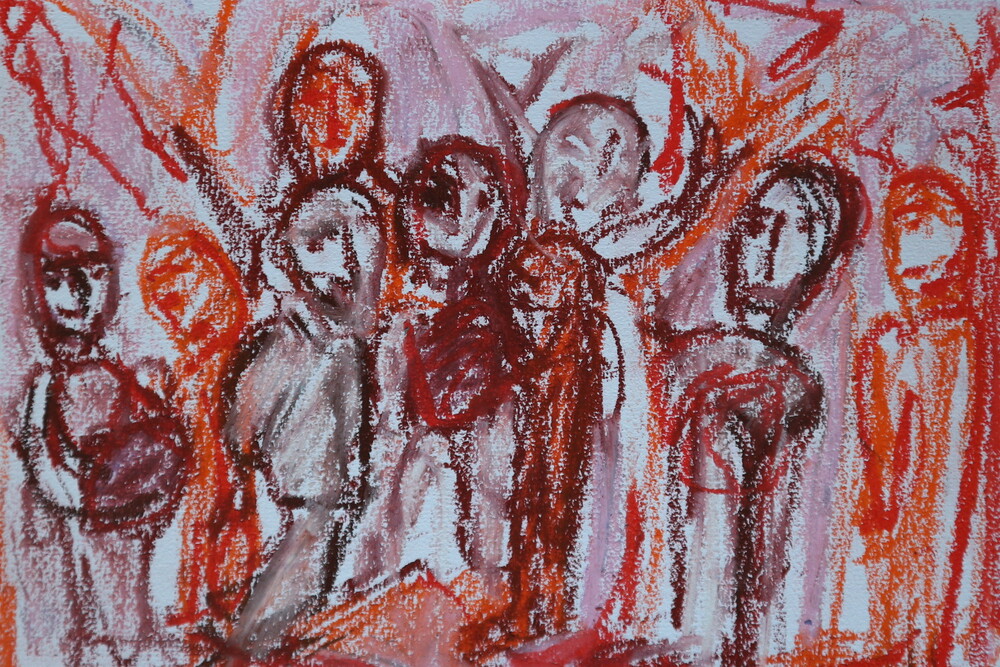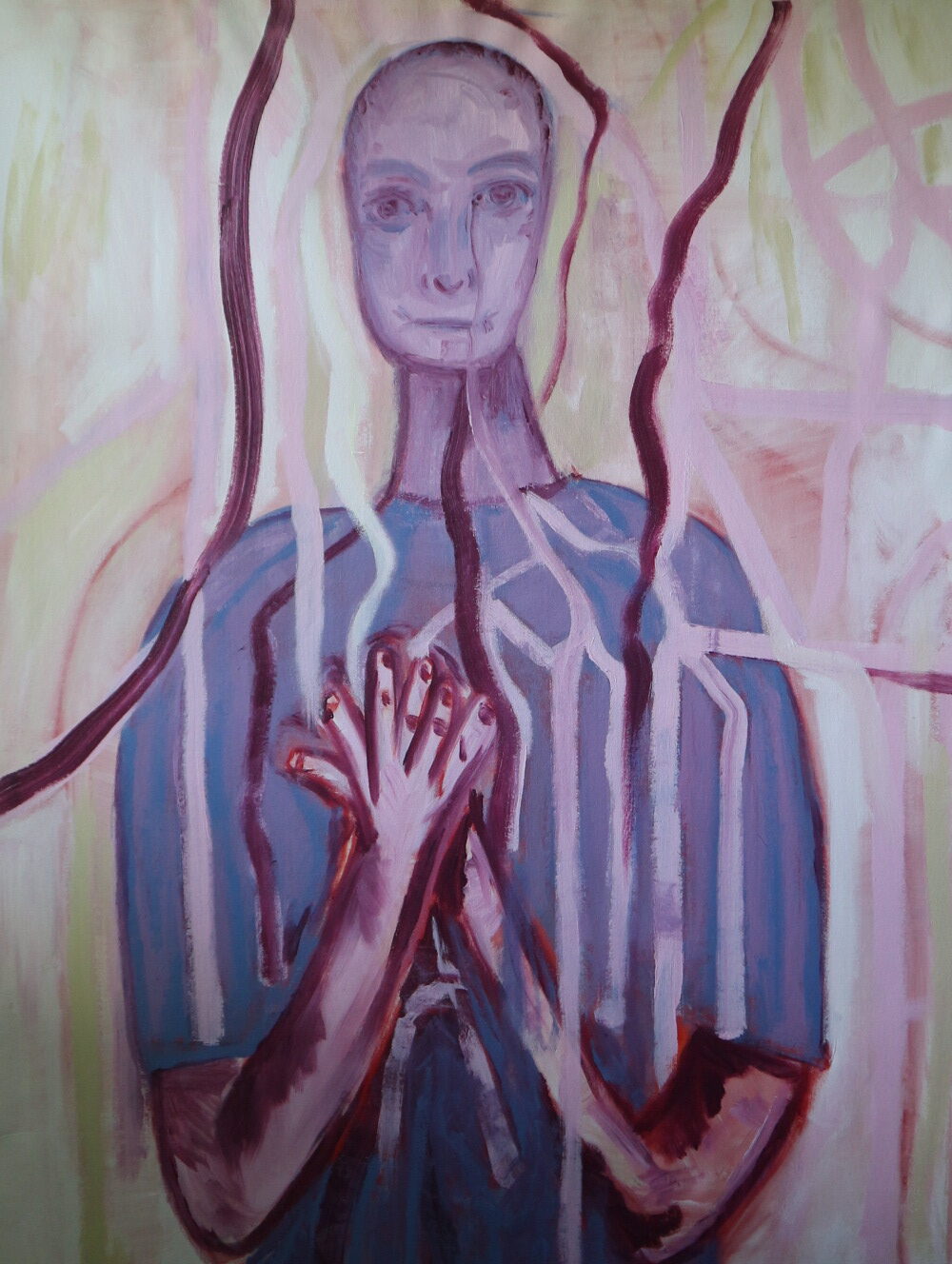Regina de Geit
Birth year: 1999.
Where do you live: Netherlands, in the province of Utrecht.
Your education: Premaster Art History, Utrecht University.
Describe your art in three words: Raising awareness in people.
Your discipline: Drawing and painting.
Website | Instagram
Can you describe the role that both the “silent world” and the “hearing world” play in your creative process?
As a creator, I am always in the silent world; I am deaf. I find that silence delightful. It brings peace to me, allowing me to capture my emotions directly. The spontaneity I feel is a game between me and the artwork. How will I react to it, and how will the viewers react to my works? It sparks curiosity in me.
As a participant in society, I function as hard of hearing. The world is full of surprises, questions, falls, and recoveries. There is less peace, I am more alert to what is happening, but I also miss some of what is said. This influences the emotions I express when I no longer hear as a creator.
 Regina de Geit | Mirror | 2024
Regina de Geit | Mirror | 2024
How do your personal experiences with cochlear implants and sign language influence your artwork?
At the age of three, I received a CI. This cochlear implant has had a significant impact on my life, enabling me to manage speaking the Dutch language. It expands my world, making sign language less important for me. On the other hand, sign language remains important because it requires less energy to follow a conversation. These two languages influence my brain between seeing images and making great efforts to understand sounds. This combination brings vibrancy to my artworks.
What emotions or themes do you aim to express through your use of color and form in your artworks?
There are different emotions that are part of life, such as fear, tension, love, hope, joy, struggle, and a touch of humor. Throughout life, I aim to capture human emotions and reinforce them through form and color. The emotions I’ve captured are those I have felt. From this foundation, I want to raise awareness of a particular theme. The figures are figurative; I want to show that there is no distinction in gender or how people look. It is up to you, as the viewer, to decide what you want to see. These emotions are universal and meant for all cultures.
 Regina de Geit | Make a choice | 2024
Regina de Geit | Make a choice | 2024
Your works often explore feelings of limitation and resilience. How do you hope viewers will respond to these themes?
My goal for the viewer is that they truly feel the emotions, understand them, and gain insight into the emotions of people who are limited. That it’s a journey of trial and error, and that they can play a role in that. That they become critical of the impact of their actions and what the system within society can do for that group. And let’s not forget that they also see that these people are happy despite their limitations.
How do you navigate between the challenges of the hearing and silent worlds in your professional art and educational work?
The challenge of the hearing world is that most people can hear. Many have not learned from their home or environment how to deal with that. In education, I’ve noticed that many teachers don’t take the time to figure out what works in the lesson for a hard-of-hearing student. I’ve had to fight for my rights, and that was exhausting and lonely. I was often told that I couldn’t handle the level, that they didn’t know how to deal with me, or that they didn’t want to talk to me. However, I also had great teachers who cared about me, took the time to see what was possible, and that is very valuable!
With my works, I want to raise awareness among teachers that they need to make space for students who are struggling in education. It’s not the difference that limits students, but it’s society that limits them. It also lies in the education system; teachers have little time for extra attention, but they do have a great influence on the generation. There definitely needs to be a change there. It’s getting worse due to the growing teacher shortage in the Netherlands.
In the silent world, I find space to express myself when creating artwork. But when I’m in the hearing environment, where communication is easier with a CI, I notice that I’m different. I communicate differently and use my concentration on different aspects than hearing people.
I have to work hard to follow the conversation, while the other person doesn’t have to. So, I get tired more quickly. But if I ask the other person to communicate with me in sign language, then they get tired faster than I do. Most people don’t learn sign language because it’s not their language. So, it depends on what you ask of each other, and finding balance with the other person is important. I realize this more and more in professional art and educational work. That’s something that remains difficult in today’s world.
 Regina de Geit | Crowd | 2024
Regina de Geit | Crowd | 2024
What role does sign language play in your identity as both an artist and a teacher?
Sign language mainly influences the way I read people differently, allowing me to express myself directly through my hands. This influences my desire to express myself through my hands when painting and drawing.
What do you want to achieve as an art historian?
As an art historian, I want to investigate how we can make society more inclusive for people who are different. That it becomes a given that people take each other into account in education, the workplace, and society. It is very important because this group faces assigned injustices that they do not deserve because of who they are. We must take care of each other and bring about change in society for our generation and the next. Art plays a big role in this.
 Regina de Geit | Sensory sensitivity | 2024
Regina de Geit | Sensory sensitivity | 2024

Leave a Reply